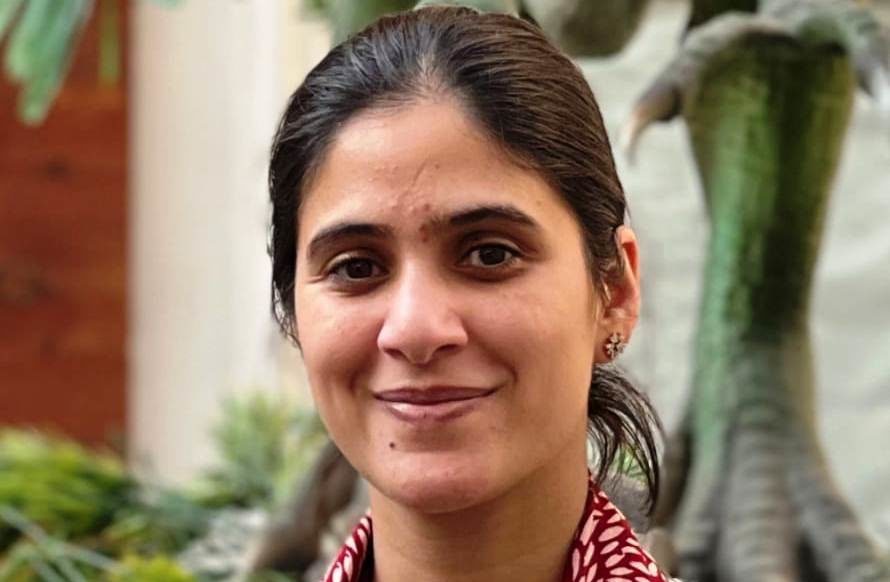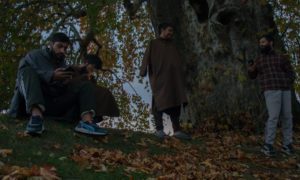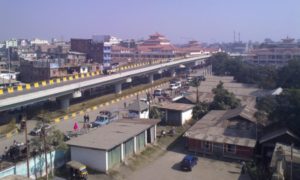Dr. Syed Rameem Zahra, Ph.D., is an accomplished scholar in the field of Computer Science and Engineering. She earned her doctoral degree from the National Institute of Technology Srinagar in 2021 and subsequently served as a Postdoctoral Research Associate at IIT Delhi until 2023.
Dr. Zahra’s educational background includes B.Tech and M.Tech Degrees in Computer Science and Engineering from the University of Kashmir and Shri Mata Vaishno Devi University.
Currently, Dr. Zahra holds the esteemed position of Assistant Professor at the Department of Computer Science and Engineering, Netaji Subhas University of Technology, India.
Her research expertise spans IoT (Internet of Things) security, 5G security, Fuzzy Logic, Quantum Computing, and Intelligent Transportation Systems (ITS).
She’s renowned for her pioneering work in analysing and enhancing the security protocols of IoT and 5G systems, mitigating security and privacy vulnerabilities through innovative defence mechanisms.
In a detailed discourse with Free Press Kashmir, Dr. Zahra talks about the advancements in the fields of academia and cybersecurity and how it will shape up the valley’s future.
Let’s begin on a lighter note. Could you share a bit about your journey into the world of data science and IoT, and what drew you to these exciting fields?
My journey into IoT began in 2016 when I read about Kevin Ashton and his idea of the “Internet of Things.” He believed IoT could change the world, even more than the Internet. This idea seemed crazy then, but now we see its impact in various aspects of life, from baby monitors to military tech. This inspired me to pursue research in IoT to make a difference.
Since Kashmir is known for its rich cultural heritage, how do you envision blending technological innovation like IoT with the preservation of this legacy?
The Kashmir Valley indeed boasts a rich cultural heritage. Preserving this legacy while integrating technological innovations like IoT presents a unique opportunity. In the digital era, where internet access is growing in Kashmir, language barriers hinder participation and knowledge sharing.
To blend technology with cultural preservation, we can initiate efforts to document key aspects of Kashmiri culture, such as stories and oral traditions, through audio and video recordings. These digital resources can serve as building blocks for language and cultural preservation tools.
Furthermore, we can create pronunciation libraries for Kashmiri words, enhancing accessibility through text-to-speech and speech-to-text technologies. Utilizing open-source software like Kathabhidhana, LinguaLibre, and Pronuncify, we can facilitate the recording and preservation of pronunciations.
While these initiatives may not immediately revive the Kashmiri language, they will progressively increase access to information in the native tongue, ensuring that the cultural heritage of Kashmir continues to thrive in the digital age.
Kashmir’s landscape poses unique challenges and opportunities. How can IoT-driven insights help local farmers optimize their agricultural practices and yield better harvests?
The fact that nearly 70% of the regional population relies on agriculture highlights its significance. Now, with modern technology like IoT, there’s a chance to revolutionize farming practices.
The introduction of the Holistic Agriculture Development Program (HADP) in Jammu & Kashmir is a promising step. It’s bringing in technology-driven projects and setting up 142 AI and precision farming centres, which can drive innovation and sustainability in agriculture.
IoT solutions, with their sensors collecting data, hold immense potential for local farmers. These insights are like a compass in the complex world of agriculture. With climate change and limited arable land, we need to make the most of every inch of farmland. IoT, through smart agriculture, provides real-time information that helps in making decisions. This not only cuts down on labour costs but also improves crop health.
IoT sensors, for instance, can monitor crucial factors such as nutrient levels, disease outbreaks, and soil moisture. This data is gold for Kashmiri farmers. It empowers them to optimize their harvests and manage their farms efficiently. These initiatives indeed paint a promising picture for the future of agriculture in our region.
Picture a futuristic “smart” Kashmir city. How might IoT-enabled infrastructure transform everyday life, considering both convenience and sustainability?
When we think about a futuristic “smart” Kashmir city, it’s exciting to see how IoT-enabled infrastructure can transform everyday life, offering both convenience and sustainability.
Smart city planning heavily relies on Information and Communication Technology (ICT) to monitor and optimize various aspects of urban living. This includes essential lifelines like roads, bridges, tunnels, railways, seaports, airports, electricity, water, and communication networks. In a “Smart” Kashmir city, we’d witness the integration of features like Smart Energy, Smart Mobility, Smart Healthcare, Smart Economy, Smart Homes, Smart ICT, Smart Infrastructure, Smart Governance, and Smart Citizenship.
The real magic happens when these systems work together, fuelled by IoT data. For instance, IoT can help manage home appliances like refrigerators and washing machines more efficiently, leading to better energy management. Additionally, IoT can monitor natural elements like trees, plants, air quality, and the environment, creating an optimal and sustainable living and working environment.
Kashmir’s natural beauty already attracts many people, and envisioning it as a smart city only adds to its allure. With more people coming in, there will undoubtedly be challenges in managing city resources and services. However, the key to addressing these challenges lies in smart and innovative resource management strategies.
A smart Kashmir city powered by IoT has the potential to make everyday life more convenient and sustainable. It’s not just about embracing technology but also about creating a harmonious and efficient urban environment that complements the region’s natural splendour.
The region’s topography can be challenging for connectivity. How can we use IoT to solve and address traffic & connectivity-related issues in the state to ensure that even the most remote areas benefit from IoT advancements?
Absolutely, considering Kashmir’s diverse topography, addressing traffic and connectivity challenges with IoT is essential. Let’s break it down:
You see, our region is divided into four zones, each with its unique geographical features. We often face traffic issues, especially during harsh winters, highway closures, congestion in cities, and connectivity problems in remote areas like Gurez and Leh.
But here’s where IoT can step in as a game-changer. IoT-based smart roads, combined with ICT, can collect and analyze data for traffic management. Imagine smart roads equipped with sensors, cameras, radars, and 5G devices. They can provide real-time data to streamline traffic and enhance safety. Plus, cloud-based data analysis can offer insights for sustainable mobility and reducing emissions.
Currently, we have limited tech involvement in transportation management, so there are plenty of opportunities. We can deploy IoT for intelligent road infrastructure, like adaptive traffic signals that respond to real-time sensor data.
Additionally, we can integrate weather monitoring systems, digital signage, and more into our existing infrastructure to transform our city into a smart one. IoT can lead to less congested streets, improved safety, extended connectivity, better services, and quicker emergency responses.
Moreover, roadside network deployments can expand wireless connectivity, making it possible to gather almost real-time road data. This can help us proactively tackle issues, improve reaction times, and enhance overall road safety.
I have every reason to say that IoT holds immense potential to address traffic and connectivity challenges across Kashmir, ensuring even the most remote areas benefit from advancements in technology.
Privacy is paramount, especially in a sensitive area like Kashmir. Could you delve into strategies that allow us to reap the benefits of data science while safeguarding individual privacy?
As wearable devices and smart home products become commonplace, privacy issues creep in. IoT devices not only collect information such as pulse, blood pressure, etc. but also tend to record the environmental conditions like the places you have visited, the temperature of the room, etc. The sensors deployed on the roads to measure the levels of noise can record the conversation of two individuals and thus pose a threat to their privacy. Similarly, when people give consent to save their credentials to allow the smart TV to automatically download the content of your choice, a strong security and privacy breach can happen just by hacking into that TV.
It is important for people to know their network, change the passwords from the default ones, run an in-depth analysis of the network if critical information can be at stake, and give out permissions cleverly.
Some additional tips that we can follow to protect our IoT devices will include the use of a VPN when connecting your IoT devices to the internet. This will help to encrypt your traffic and protect it from prying eyes. Disable remote access to your IoT devices unless you need it. This will make it more difficult for hackers to gain access to your devices. Monitor your IoT devices for unusual activity. If you see anything suspicious, such as a device sending a lot of data or connecting to a strange network, take action immediately.
In essence, it’s about striking a balance. We can enjoy the benefits of data science and IoT while safeguarding our privacy through awareness and smart security practices.
Educating communities about data science and IoT is crucial. How can we make these concepts relatable and exciting for people who might not be familiar with the tech world?
As we are nearing the time when every individual in the world will be surrounded by a minimum of 10 IoT devices, it becomes extremely important to educate the masses about the implications that this may have. IoT devices would soon be seen everywhere, human beings would find themselves dependent on these devices just like air and water. Moreover, due to their rapid proliferation, the amount of data that IoT devices produce, send, and use will go to astronomical figures. As such, if something is going to be everywhere, remaining oblivious of what it is and how it functions is not going to work.
Therefore, educating communities about data science and IoT is essential for ensuring that everyone can benefit from these technologies and stay away from its wrath. We can do this by creating educational resources that are accessible and engaging. We can also work with local schools and community organizations to incorporate data science and IoT into their curriculum.
Imagine you have access to real-time data during a natural disaster in the region. How could this information be leveraged to enhance emergency response and minimize impact?
Certainly, having access to real-time data during a natural disaster is a game-changer. Let’s dive into how this information can supercharge emergency response and minimize the impact.
You see, real-time data is abundant in our digital world. It’s a powerful tool for disaster management. Firstly, it helps predict disasters early by monitoring weather conditions, seismic activities, and other indicators. This early warning system allows authorities to prepare better, like evacuating high-risk areas and mobilizing emergency services. For example, Cyclone Biparjoy in 2023 was predicted early, enabling timely evacuations and saving lives.
Once a disaster hits, data like satellite images and drone footage becomes invaluable. It helps assess the damage, giving authorities a clear picture of the extent of the loss. This, in turn, aids in making informed decisions and targeting relief efforts where they’re needed most. For instance, during the eruption of Mount Nyiragongo in 2021, satellite images tracked lava flow and identified danger zones.
Real-time data also plays a critical role in search and rescue operations. Heat signatures and signals from mobile devices help locate displaced and injured individuals, making rescue efforts more effective. Information on road closures and safe zones can be shared with the public to keep them out of harm’s way. In the case of the Nepal earthquake in 2015, mobile phone data was used to track people’s locations and assess population displacement.
The era of real-time data has revolutionized disaster management. It allows for proactive measures through early prediction and planning, as well as rapid, data-driven responses during a crisis. Whether it’s assessing damage, detecting hazards, or directing rescue operations, real-time data is an indispensable tool that enhances our ability to protect lives and communities during disasters. It’s not just a technological breakthrough; it’s a lifeline in times of need.
Collaboration fuels progress. How do you envision data scientists, IoT experts, and local communities working together to build a stronger, more resilient Kashmir?
Certainly, collaboration between data scientists, IoT experts, and local communities is key to a stronger Kashmir. They can share knowledge and resources, educate locals, and develop tailored solutions to address specific needs, such as monitoring water levels or livestock tracking. Moreover, this partnership can empower communities by providing training and opportunities for active participation in their own development.
We’ve seen how IoT devices can make our lives more convenient, but they also open the door to potential security risks. Could you shed some light on how these devices might inadvertently expose users to scams like phishing and even physical security breaches? How can individuals protect themselves in this ever-connected landscape?
You are right. IoT devices, while making life convenient, can also expose users to security risks like phishing and physical breaches.
The core problem lies in the interdependence of IoT devices. As their numbers grow, so does the complexity of their communication. They not only communicate explicitly but also implicitly, which can create ambiguity. For instance, a smart home might simultaneously detect smoke and an intruder, causing confusion. Similarly, a hacker can compromise one device to trigger a physical breach, like opening windows by manipulating the thermostat.
To protect against such threats, one should regularly conduct in-depth network analysis, especially for valuable data. Use strong, regularly changed passwords, and limit online information sharing. Keep devices’ firmware up-to-date to patch vulnerabilities. Apply security patches promptly and download from trusted sources. Know your IoT network, track devices and permissions. Secure all network points. Maintain critical data backups. Be cautious of unsolicited emails or messages requesting personal information.
These measures can help individuals safeguard their IoT-connected lives in an ever-connected landscape.
Given your keen interest in smart transportation, can you walk us through the exciting ways IoT and data science can team up to design transportation solutions that perfectly fit the unique mobility challenges of Kashmir?
Let’s get to the heart of the matter. Kashmir’s traffic management needs a balance between increasing capacity and controlling traffic effectively. Traffic cops play a crucial role in controlling traffic, but they can’t handle the technical aspects of managing road capacity and supply-and-demand dynamics.
With a population of over 13 million and a million cars, mobility is a big challenge. Gridlocks in places like Ganderbal, Budgam, Srinagar, Anantnag, and Baramulla are common due to road development and traffic management issues.
To improve, we can explore shared mobility options like efficient public transportation with smart ticketing. Startups and entrepreneurs could offer innovative solutions for traffic management and congestion, focusing on eco-friendly and resource-efficient approaches. It’s about finding a blend of capacity expansion and smart traffic management for a smoother Kashmir commute.
Kashmir’s road infrastructure can be intricate due to its landscape. How might Intelligent Transportation Systems offer innovative solutions to enhance road safety, traffic management, and overall transportation efficiency in this dynamic environment?
I think improving Kashmir’s road infrastructure is crucial for transportation efficiency. Encouraging cleaner fuels and non-motorized transport like smart bicycles can help reduce pollution.
Modern vehicles are now digital marvels, offering real-time information and control through smartphones. Traffic navigation apps, automated signals, and real-time updates on road conditions can combat congestion and enhance safety.
Intelligent Transportation Systems (ITS) like Automatic Vehicle Location, Real-time Passenger Information, and contactless ticketing can transform the transportation experience. ITS enables precise scheduling, efficient routes, and enhanced passenger comfort.
To boost road safety, ITS assists in avoiding common driving errors like accelerating instead of braking or exceeding speed limits. It’s about creating a smart and efficient transportation system tailored to Kashmir’s unique needs.
As we wrap up, let’s gaze into the future. Can you paint a picture of what life might look like in the Kashmir Valley a decade from now, with data science and IoT as integral components?
In the very near future, we are going to witness IoT-driven automation in every sector ranging from the management of items with trivial importance like thermostats to the management of life-saving medical implants. The application spectrum of IoT will run from monitoring the dampness in crops to auditing the flow of items through a production line, to remotely observing patients with interminable illnesses and overseeing their restorative devices.
It is to say that the potential application areas of IoT in Kashmir are innumerable and diverse, percolating into all the spheres of individual lives as well as into enterprises and society as a whole.
Your refrigerator will have the ability to contact the retailer on its own when it runs low on milk but the same refrigerator may be used by black-hats to break into your home. In conclusion, life in Kashmir will definitely become a bit more enjoyable with IoT but at the same time, we will need to be a bit more cautious as well.












